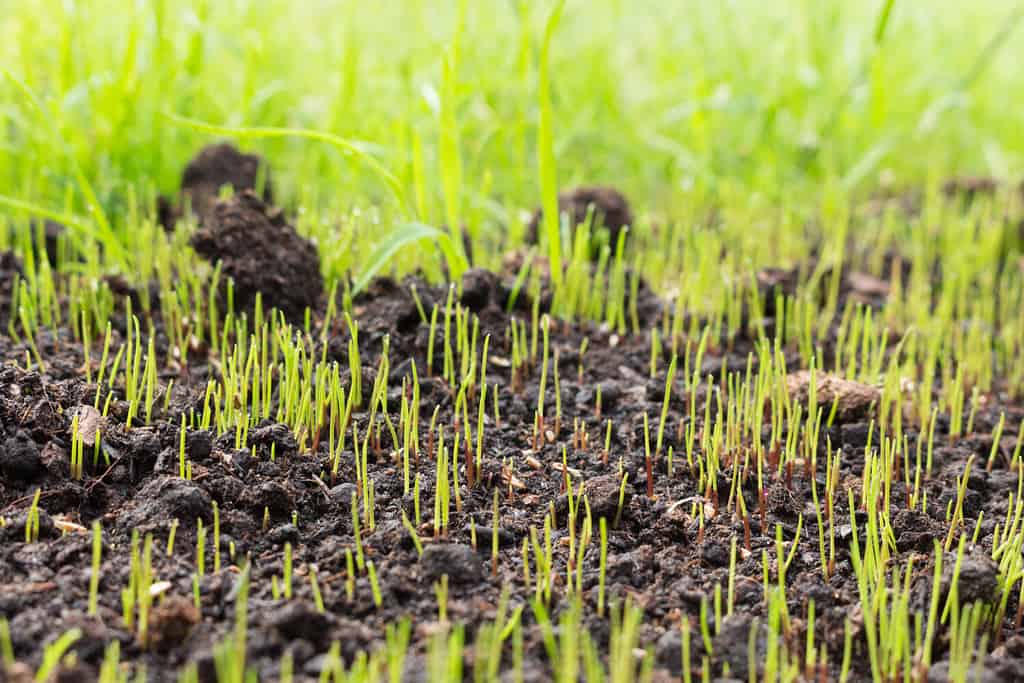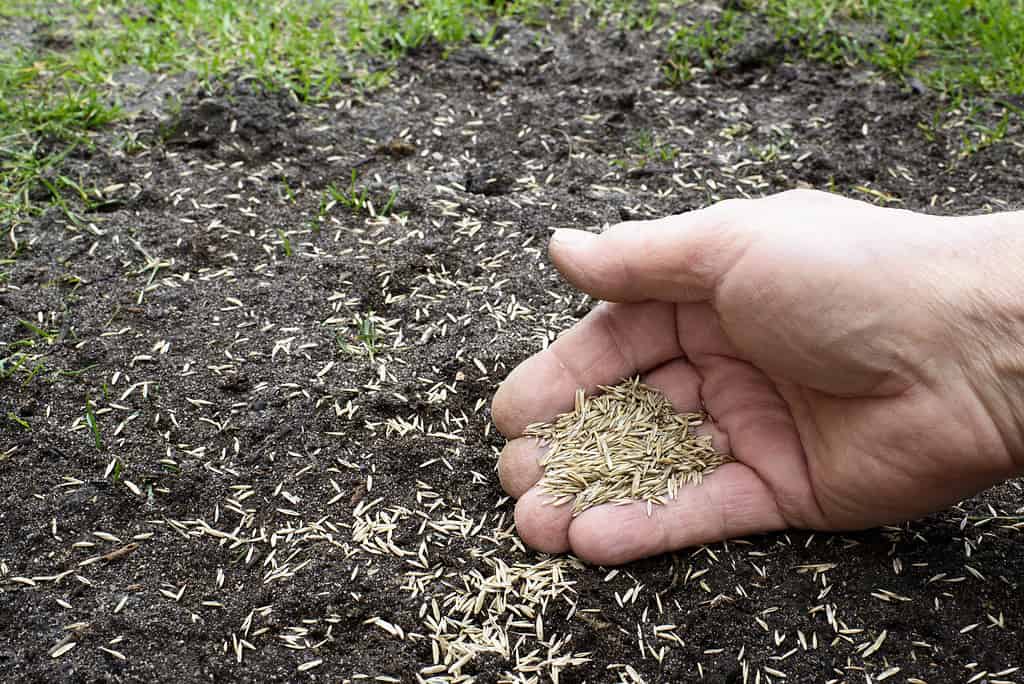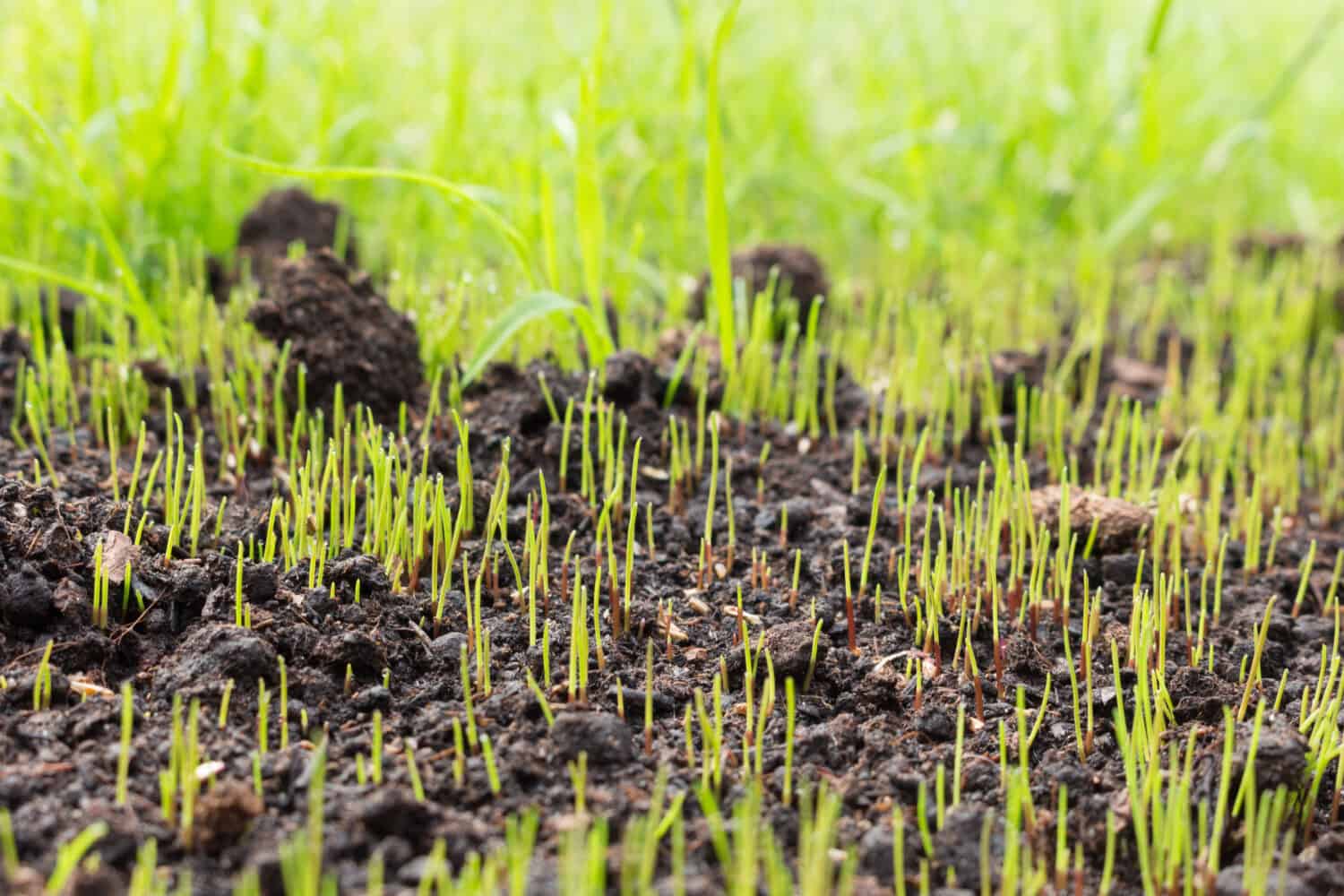A lush, vibrant lawn can transform your outdoor space, making it a haven for relaxation and recreation. However, achieving that picture-perfect lawn begins with the right timing for grass planting. If you have ever wondered when the best time of year to plant grass is, you are in the right place. Discover when to plant grass and uncover the reasons and factors that influence successful seeding. Whether you are a seasoned gardener or a novice looking to enhance your home’s curb appeal, understanding the ideal planting times can make all the difference in achieving a thriving lawn.
What Is the Best Time of Year to Plant Grass?
The best time to plant grass depends on your location and the type of grass you want to grow. Generally, early fall and late spring are ideal. Cool-season grasses thrive in fall, while warm-season grasses grow best in spring. For specific timing, check your local climate and grass type recommendations. The chart below shows the best season for planting popular grass cultivars:
| Grass Type | Planting Season |
|---|---|
| Bent grass | Early Fall |
| Bermuda grass | Late spring |
| Buffalo grass | Late spring |
| Centipede grass | Late spring |
| Fine Fescue | Early fall |
| Kentucky Bluegrass | Early fall |
| Perennial Ryegrass | Early fall |
| St. Augustine grass | Late spring |
| Tall Fescue | Early fall |
| Zoysia grass | Late spring |

Your grass conserves water and cleans the air.
©philmillster/Shutterstock.com
Late Spring Planting
Warm-season grasses thrive when planted in late spring to early summer between May and June once the soil has warmed sufficiently. These grasses prefer hot weather and will establish well during the summer months. Most cultivars are drought-tolerant. Additionally, planting too early exposes warm-season grasses to cooler temperatures, resulting in slow growth and shallow roots.
Early Fall Planting
Early fall, typically from late August to early October, is another prime grass-planting window. Cool-season grasses benefit from the favorable combination of warm soil and cooler air temperatures. Fall planting also reduces competition from weeds. By establishing your grass in early fall, you give it time to develop a robust root system before winter sets in, leading to a lush and resilient lawn in the spring.
Why Is Timing Important When Planting Grass?
Timing significantly impacts the success and vitality of your lawn. Furthermore, proper timing aligns your grass seedlings with the most favorable conditions, allowing your lawn to establish strong roots.
If you sow your grass seed too early or too late in the season, you risk subjecting it to extreme temperatures, whether summer heat or winter cold. These adverse conditions stress young grass plants and slow their growth. Conversely, when you plant at the right time, you provide your grass with the optimal environment for germination, leading to a more resilient lawn.
Timing also plays a role in avoiding common lawn problems. Planting grass at the wrong time exposes it to competition from weeds or pests, making it harder to establish a uniform and healthy lawn. By understanding the best time to plant grass in your specific region and considering factors like grass type and local climate, you can set your lawn on a path to success.
What Effect Does Climate Have on Planting Grass?
Your climate plays a role in determining the success of your turfgrass. It influences the timing and type of grass that will thrive on your lawn. First, the average temperature in your area affects your choice of grass species and the timing of planting.
Cool-season grasses prefer cooler temperatures, making them suitable for northern regions with cold winters. In contrast, warm-season grasses thrive in hotter climates found in the southern and southwestern parts of the U.S.
Second, the amount and distribution of rainfall in your region are also important. Some grasses, like buffalo grass and Bermuda grass, can withstand drought conditions and are suitable for arid climates. In regions with ample rainfall, such as the Pacific Northwest, you might consider grasses like Kentucky Bluegrass and Tall Fescue that can thrive in moist environments.
Additionally, understanding your local frost and freeze patterns is also crucial. Planting warm-season grasses too early in areas prone to late-spring frosts can be detrimental. On the other hand, cool-season grasses planted in regions with mild winters can remain green throughout the year.

Each grass seed produces one sprout.
©iStock.com/
Planting Grass in the Spring
Spring is a season of renewal, making it an ideal time for planting grass and revitalizing your lawn. As the temperatures rise and the days grow longer, the soil warms, creating optimal conditions for grass seed germination. Spring is the ideal time for planting warm-season grasses such as Bermuda grass, zoysia grass, and St. Augustine grass.
Spring planting allows warm-season grasses to take full advantage of the growing season, leading to lush and vibrant lawns throughout the summer. Warm-season cultivars go dormant during the colder months but flourish in the warmth of spring and summer.
To ensure successful grass planting in the spring, preparing your lawn, choosing the appropriate grass variety, and providing adequate watering and care during the establishment phase is essential.
Planting Grass in the Fall
Fall is the prime season for sowing cool-season grasses and rejuvenating your lawn. As the heat of summer subsides and temperatures slowly decline, this creates an optimal environment for the germination and establishment of cool-season grasses like Kentucky Bluegrass and fescue varieties.
One of the key advantages of fall planting is the reduced stress on newly germinated grass. Cooler temperatures and more consistent moisture levels provide an ideal backdrop for cool-season grass seed to thrive. Furthermore, decreasing weed competition during fall allows grass to grow with less interference.
Preparing your lawn for fall planting involves removing debris, aerating the soil, and selecting the right grass seed variety suited to your region. Adequate fertilization and diligent watering during the establishment phase are essential for ensuring a robust and healthy lawn come spring.
Planting Grass in the Transition Zone
The transition zone, a region covering most of the Midwest and Mid-Atlantic regions, presents unique grass-growing challenges. The area lies between the ideal climates for warm- and cool-season cultivars, and neither cool-season nor warm-season grasses thrive consistently throughout the year.
The key to successful grass planting in the transition zone is selecting a grass variety that adapts to your region’s fluctuating conditions. Many homeowners opt for a blend of grass seed, combining cool-season and warm-season grass types to ensure year-round coverage.
Fall is typically the best time to overseed or establish lawns in the transition zone. During this season, the soil remains warm, providing a favorable environment for root development, especially for cool-season grasses.
For warmer months, warm-season grasses like Bermuda and zoysia can thrive in the transition zone’s heat. Still, they may go dormant during colder periods. In contrast, cool-season grasses like tall fescue can handle the cooler months but may struggle in the summer heat.
A successful lawn in the transition zone involves careful planning, proper soil preparation, and selecting the right grass seed combination. Adequate care, including regular watering and mowing, helps maintain a green lawn year-round.

Turfgrass needs 1 to 1.5 inches of water weekly.
©goldyrocks/iStock via Getty Images
Tips & Tricks for Successful Planting
Increase your chances of successfully planting and maintaining a lush and vibrant lawn by following some tips and tricks.
- Prepare your soil: Remove debris, aerate compacted soil, dethatch your lawn, and amend your soil with compost or organic matter before planting new grass.
- Spread evenly at the suggested rate: Use a broadcast spreader to prevent patchy areas and ensure even seed distribution. Always follow the recommended seed rates to avoid overseeding, which leads to competition and poor growth.
- Fertilize: Apply a starter fertilizer to promote growth. Follow up with regular fertilization based on soil test results.
- Water frequently: Keep the soil consistently moist during the germination phase. After your seedlings sprout, transition to deeper, less frequent watering to encourage deep roots. Aim for three 20-minute watering sessions weekly once your grass matures.
- Wait to mow: Don’t mow until your new grass has reached 3 to 4 inches.
- Control weeds: Monitor and remove weeds as soon as possible to avoid competition. Never use pre-emergent herbicide on new grass or seeded areas.
FAQ About the Best Time of Year to Plant Grass
Can I Spread Seed Over an Existing Lawn?
Yes. Overseeding an existing lawn is a common practice to improve thickness, color, and lawn health. It fills in bare spots, enhances disease resistance, and rejuvenates older lawns.
Can I Put Too Much Grass Seed Down?
Yes. Using too much grass seed causes competition between seedlings, uneven coverage, waste, and increased susceptibility to disease and pests. Always follow the recommended seeding rates on your package for the best results.
What Is the Best Month to Plant Grass?
The best month to plant grass seed depends on your grass type and location.
- Cool-season grasses: Plant in late August to early October.
- Warm-season grasses: Plant from May to June.
The Best Time of Year to Plant Grass for a Flourishing Lawn
Choosing the best time of year to plant grass is the first step in nurturing a lush and resilient lawn. Whether you are leaning toward planting cool-season grass in the fall or a warm-season variety in the spring, the timing aligns your efforts with nature’s rhythms. By considering your region’s climate, grass type, and local conditions, you pave the way for a vibrant and enduring lawn. Remember, the best time to plant grass varies, but with the right knowledge, you will cultivate a beautiful green space that enhances your outdoor living experience.
Thank you for reading! Have some feedback for us? Contact the AZ Animals editorial team.








